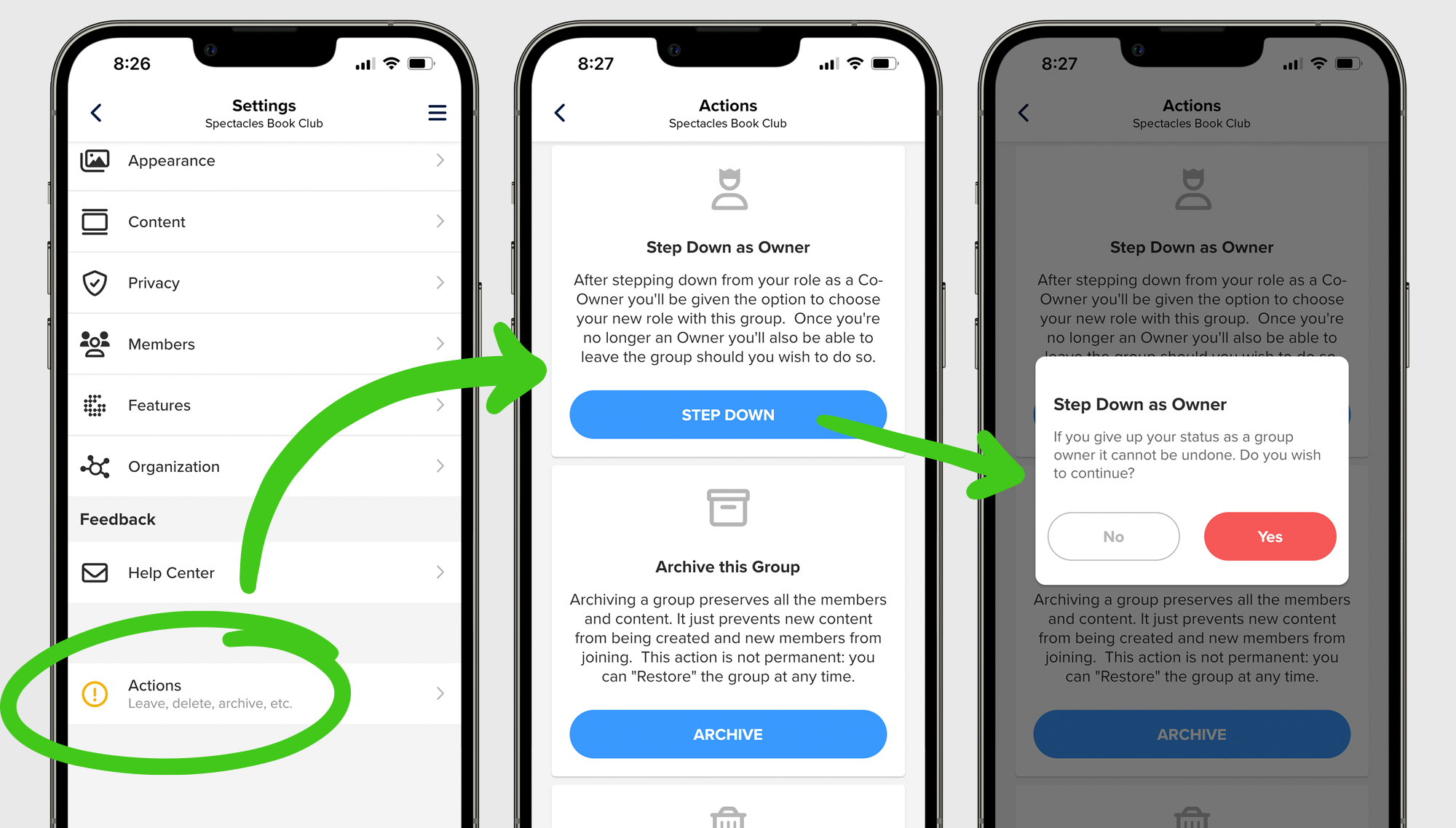There comes a time, even with the most storied and successful groups, leadership has to transition at the top. A season ends, a term expires, or maybe it’s just time for new blood, regardless of the change, the best groups carry on with a new leadership team.
As part of this transition, it’s important for existing Owners and Admins to be able to easily step down when their time has ended. It’s also equally important that the new Owners and Admins can run their group without worrying about previous Owners and who has access to what admin privileges. Your members don’t want to see previous Owners listed at the top of your membership directory or your group details. It’s not fair to the current Owners/Admins running the group going forward.
The good news is that stepping down from Owner to Admin or Owner to Member is easy to do. The only thing to be mindful of is that you will need at least one other Co-Owner in place to step down, allowing for a natural transition. From your Settings, choose Actions at the very bottom of the list. Once you’ve chosen Step Down, you will be prompted to step down to either Admin or Member. If you need to leave the group after you have stepped down, you can revisit Actions and then Leave.

During this transition from one leadership team to the next, there are a few best practices that should be passed down to the new Owners. The most important thing for any new Owner is making sure your members can get in touch with you when they need to. This means opening your profile from your Member Directory, updating your personal contact details, and then making this information visible to your membership.
Invites and Approvals:
Another important adjustment for any new Owner just getting started is handling invites and approving new members into your group. Invites are easy to take action in a variety of ways. The two easiest ways to mass invite is by sending an email invite or sharing a QR Code. Both can be accessed through Invite either in your group menu or the ••• menu from your group’s home screen. Just hit the blue Invite Members button, and you will see three options to invite: a) Share Invite b) Copy Invite and c) View QR Code.
Once invites are sent, you will start receiving push notifications with new member requests to join. If you miss the push notification, you will see a blue badge on the bell icon in your lower navigation, indicating that you have new notifications. Go ahead and open the new notification and then click the blue Manage Request button.
Membership Questions:
If your group has membership questions, you will see the person’s answers to those questions which will likely give you enough information to know whether to admit the person or not. If you need to update the questions to your liking or maybe add more questions, it’s simple to do. From your Settings, choose Privacy and then Membership Questions. There you can add, edit, and even sort your questions. These membership questions are great guardrails to help ensure you are approving the right people into the group.
Managing Subgroups:
Another important feature for new Owners and Admins is subgroups. If your group uses subgroups, smaller groups within the larger group, you will want to make sure your members are assigned to the right subgroups. It’s easy to see who is assigned to which subgroup. From your Settings, choose Organization, then Subgroups, and Assign Subgroups to Members. There you will see your members listed in alphabetical order and you can select and deselect which groups. If you are running a team and using the roster feature, you can assign subgroups to the players as well. Subgroups are also great when sending mass communications. They allow you to tailor your communications so your message hits the right group.

Creating Seasons:
Finally, if you’re an Owner of a team and you have seasons, you will want to share with your new Owner/Admin how to create seasons. From your Settings, choose Seasons, and end the current season and create the new season. When you end the current season, the schedule, results, and roster will be assigned to that season. When you create the new season, you can add your new schedule and roster. You can even clone the roster for the new season to save time.
GroupSpot prides itself on the utility it provides to Owners and Amins running large, organized groups. Being aware of these tips and tricks will make the transition from one leadership team to the next seamless, and it gives the new regime a running start.







